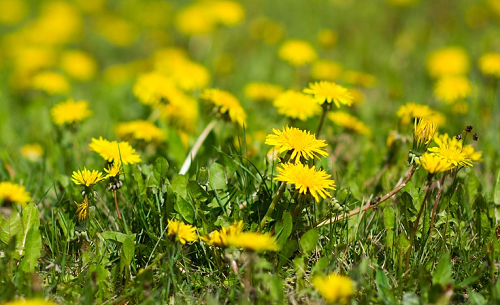
If weeds have taken over your garden and claimed it as their own, wrestling back control can seem like a mammoth task. In today's blog, we're going to talk you through the different ways you can remove weeds from large areas with ease.
You could just bend the knee and admit defeat to your new perennial overlords, content with living out your days as a mere tenant on weedy land.
Failing that, you could fight back and give these weedy warriors a grass-kicking to remember!
If you want to learn the best ways to clear a large area of weeds, you’re in the right place. Read on for the inside track on just how to remove weeds from a large area.
SOS: Save Our Soils
Before you begin the de-weeding process, you need to ask yourself one question (besides “Do you feel lucky?”) – that being whether or not there are plants worth saving.
If the answer is “yes”, you could be limiting your options as far as widespread weed removal goes.
Weeding a large surface area can be done fairly simply; however, treating a large area without negatively affecting certain plants within that area can pose some tricky problems.
Should your patch of plight house a prized plant, you may need to remove the weeds individually to avoid killing off the crops you aren’t willing to sacrifice. In this instance, the best way to clear a large area of weeds is to carefully remove them by hand!
Have a Hoe-Down
Any experienced gardener will tell you that an essential tool for removing weeds is the humble garden hoe. These come in a variety of forms, ranging from flat wide to diamond-shaped.
For large areas, hand-sized hoes are not going to cut it, while narrow-bladed hoes – like the Warren hoe and triangular hoe – can also make a real meal of the task at hand.
Instead, opt for a larger hoe, complete with a long handle and with a wide blade, such as a standard gardening hoe, an onion hoe or an eye hoe. This will allow you to break up a wider area more efficiently.
If there aren't too many previous plants around, grabbing a hoe to remove large clusters of weeds is a very effective way to weed a large area.
Take Cover
Another great option for large area weed removal is to cover the area with landscape fabric. This will prevent the weeds from sourcing oxygen, smothering the weeds into submission. Old carpet and black polythene will also work just as well, although they might be a bit of an eye-sore.
While these large area weed removal methods can be effective, they can also take months to kill off the unwanted weeds and there are few gardeners who are willing to wait this long. If you still think that covering the weeds is the best way to remove weeds in large areas, you could combat the eyesore by adding chipped bark over the top to help disguise the covering.
Professional Weed Removal
Despite the tips and hints above, perhaps the best way to remove weeds from large area lawns is to enlist professional help and call in the experts.
There’s no shame in delegating the weed duties elsewhere. After all, weeds have a nasty habit of returning; ineffective treatment can result in unsuccessful removal and recurring problems down the line.
What’s more, weed removal can be a time-consuming process at the best of times, let alone when you’re dealing with an earthy epidemic that engulfs your whole garden. Save yourself the hassle and leave it to the pros.
Here at Total Weed Control, our cavalry of weed-whacking warriors come equipped with the heavy-hitting artillery, packing professional equipment, industry-grade pesticides and expert knowledge on how to use them.
For weed removal that’s efficient, economical and effective, call Total Weed Control today on 029 2039 7554. Alternatively, drop us a line using the button below and request a FREE garden survey today!
Request a FREE Survey
